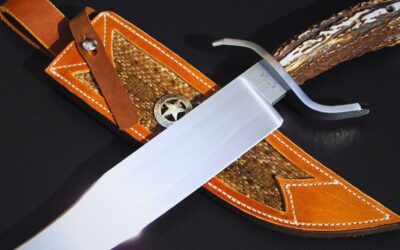Introduction to Pocket Knife
Traveling can be stressful enough without having to worry about whether or not you can bring your trusty pocket knife along for the ride. Understanding airline policies and the regulations set by the Transportation Security Administration (TSA) is crucial for a smooth travel experience. In this article, we’ll dive deep into the topic of carrying pocket knives on planes, unraveling the rules and offering practical advice to ensure you’re well-prepared for your next trip.
Understanding TSA Regulations
What is TSA?
The TSA, or Transportation Security Administration, is a U.S. government agency responsible for the security of the traveling public in the United States. Established in response to the September 11, 2001 attacks, the TSA implements security measures to ensure the safety of air travel.
General Rules for Carry-On Items
When it comes to carry-on items, the TSA has a comprehensive list of what is allowed and what isn’t. Liquids, gels, and aerosols are subject to the 3-1-1 rule (3.4 ounces or less per container, in a 1-quart-sized bag, one bag per passenger). Sharp objects, especially, are heavily regulated due to the potential threat they pose.
Specific Regulations for Pocket Knives
Unfortunately, pocket knives fall under the category of prohibited items in carry-on luggage. The TSA strictly prohibits any knives in carry-on bags, regardless of blade length or type.
Pocket Knives in Carry-On Luggage
Prohibited Items List
Pocket knives are specifically listed as prohibited in carry-on luggage by the TSA. This includes all types of knives, from small keychain knives to larger multi-tools with blades.
Reasons for Restrictions
The primary reason for these restrictions is passenger safety. Knives can be used as weapons, and allowing them in the cabin could pose significant risks to passengers and crew.
Examples of Items Allowed and Prohibited
- Allowed: Nail clippers, safety razors, and scissors with blades shorter than 4 inches.
- Prohibited: Pocket knives, multi-tools with blades, and box cutters.
Pocket Knives in Checked Luggage
TSA Guidelines for Checked Luggage
While pocket knives are banned from carry-on bags, they are allowed in checked luggage. However, there are still guidelines to follow to ensure they are packed safely and securely.
How to Safely Pack a Pocket Knife
To avoid any issues, ensure your pocket knife is sheathed or securely wrapped to prevent injury to baggage handlers and inspectors. It’s also a good idea to place it in the middle of your suitcase, surrounded by other items, to keep it secure.
Airline-Specific Regulations
Some airlines might have additional rules, so it’s always best to check with your carrier before packing your knife in checked luggage.
International Travel Considerations
Different Countries, Different Rules
When traveling internationally, be aware that different countries have different regulations regarding knives. What might be allowed in the U.S. could be strictly prohibited elsewhere.
Tips for Researching International Regulations
Before you travel, research the specific regulations of your destination country. This can usually be done through a simple online search or by contacting the country’s embassy.
Case Studies: Pocket Knife Policies in Popular Destinations
- United Kingdom: Strictly prohibits knives in carry-on luggage, but allows them in checked bags with proper packing.
- Australia: Similar to the U.S., prohibits knives in carry-on but allows in checked luggage.
- Japan: Very strict on knife regulations, with severe penalties for non-compliance.
Exceptions to the Rule
Situations Where Knives Might Be Allowed
In certain situations, like for military personnel or law enforcement officers, there may be exceptions. However, these exceptions are rare and come with stringent requirements.
Military and Law Enforcement Exceptions
Members of the military and law enforcement may carry knives as part of their duty equipment, but they must have proper documentation and adhere to specific procedures.
Special Tools and Multi-Purpose Knives
Certain multi-purpose tools without blades, like a Leatherman tool minus the knife, may be allowed in carry-on luggage. Always check the TSA guidelines to confirm.
Penalties for Non-Compliance
What Happens If You Bring a Prohibited Item
If you accidentally bring a prohibited item like a pocket knife to the security checkpoint, it will be confiscated. In some cases, you might be able to mail it to yourself, but this isn’t always an option.
Legal Consequences
Carrying prohibited items can lead to legal consequences, including fines or even arrest, depending on the severity of the violation.
Fines and Other Penalties
Fines for bringing prohibited items can range from a few hundred dollars to several thousand, depending on the item and the circumstances.
Alternatives to Carrying a Pocket Knife
Travel-Friendly Tools
Consider travel-friendly alternatives like a TSA-compliant multi-tool or safety cutter that doesn’t include a knife blade.
Renting or Buying Knives at Your Destination
Another option is to rent or purchase a knife at your destination, then either leave it behind or mail it back home.
Other Self-Defense and Utility Tools
There are plenty of other tools that can serve similar purposes without violating airline regulations, such as tactical pens or keychain tools.
Personal Stories and Experiences
Anecdotes from Travelers
Many travelers have stories about accidentally packing a pocket knife in their carry-on. These anecdotes often end with the knife being confiscated or a stressful rush to the post office.
Lessons Learned
The key lesson from these stories is the importance of thoroughly checking your bags before heading to the airport.
Tips and Advice
Always double-check your carry-on for prohibited items, and keep a list of what’s allowed to avoid last-minute surprises.
Safety Tips for Travelers
How to Stay Safe Without a Knife
You can stay safe while traveling by being aware of your surroundings, avoiding risky areas, and carrying non-weapon self-defense tools like a whistle or personal alarm.
Awareness and Self-Defense Techniques
Learning basic self-defense techniques can also boost your confidence and safety while traveling.
Essential Travel Safety Gear
Other essential travel safety gear includes a sturdy travel lock, RFID-blocking wallet, and portable door lock for your accommodation.
The Role of Technology in Security
Advances in Airport Security Screening
Technology has greatly advanced airport security screening, making it more efficient and thorough.
The Role of AI and Machine Learning
AI and machine learning are being used to enhance security screenings, identifying threats more accurately and quickly.
Future Trends in Travel Security
Future trends in travel security include biometric screenings and advanced threat detection systems, which will continue to evolve to keep passengers safe.
Common Myths and Misconceptions
Debunking Myths About Pocket Knives on Planes
One common myth is that small pocket knives are allowed in carry-on luggage. This is false; all knives are prohibited.
Clarifying Common Misunderstandings
Another misunderstanding is that expensive or custom knives might be exempt from confiscation. In reality, all prohibited items are treated the same, regardless of value.
Preparing for Your Trip
Checklists and Planning Tips
Create a pre-travel checklist to ensure you’ve packed appropriately and haven’t included any prohibited items.
Researching Your Airline’s Policies
Always check your airline’s specific policies regarding prohibited items, as they can vary.
Packing Tips for a Hassle-Free Security Check
Pack your carry-on in a way that makes it easy to remove electronics and liquids for inspection, and ensure sharp objects are in checked luggage.
Traveling with Other Sharp Objects
Rules for Scissors, Razors, and Other Tools
Scissors with blades shorter than 4 inches are allowed in carry-on luggage, but straight razors are not.
How to Pack These Items
Pack sharp objects securely in your checked luggage, ensuring they are sheathed or wrapped to prevent injury.
TSA-Approved Alternatives
Consider TSA-approved travel scissors and razors that comply with regulations.
Conclusion
Traveling with a pocket knife requires careful planning and an understanding of TSA and international regulations. By following the guidelines outlined in this article, you can ensure a smooth and stress-free travel experience. Remember to check your bags thoroughly, stay informed about the latest regulations, and consider alternatives to carrying a pocket knife in your carry-on. Safe travels!
FAQs
Can I bring a pocket knife in my carry-on if it’s small?
No, all knives, regardless of size, are prohibited in carry-on luggage.
Are there any knives allowed in carry-on luggage?
No, the TSA does not allow any knives in carry-on luggage.
What should I do if I accidentally pack a knife in my carry-on?
If you realize you’ve packed a knife in your carry-on, notify TSA officers immediately. They may allow you to mail it to yourself or check it in your luggage if possible.
Could I at any point bring a folding knife on a global flight?
Rules vary by country, but generally, pocket knives are not allowed in carry-on luggage on international flights either.
How can I find out more about TSA regulations?
Visit the TSA website or contact their customer service for the most up-to-date information on regulations and prohibited items




0 Comments